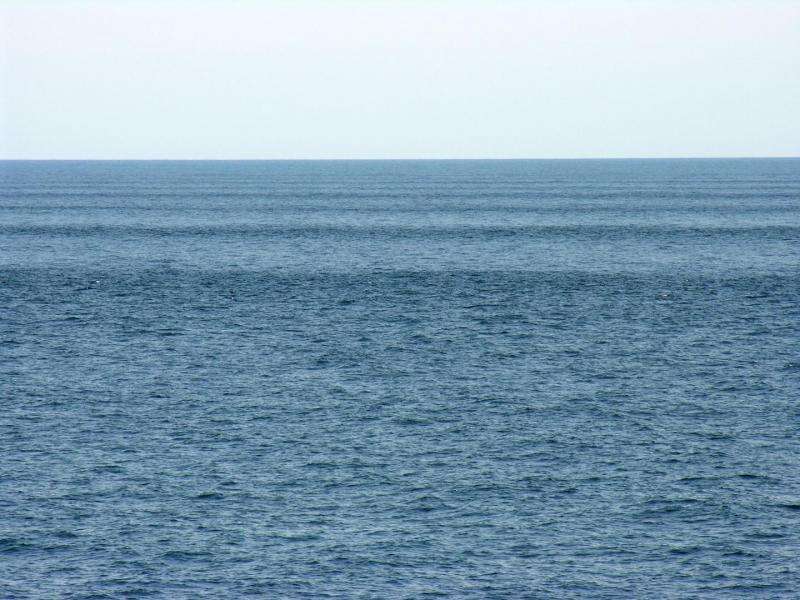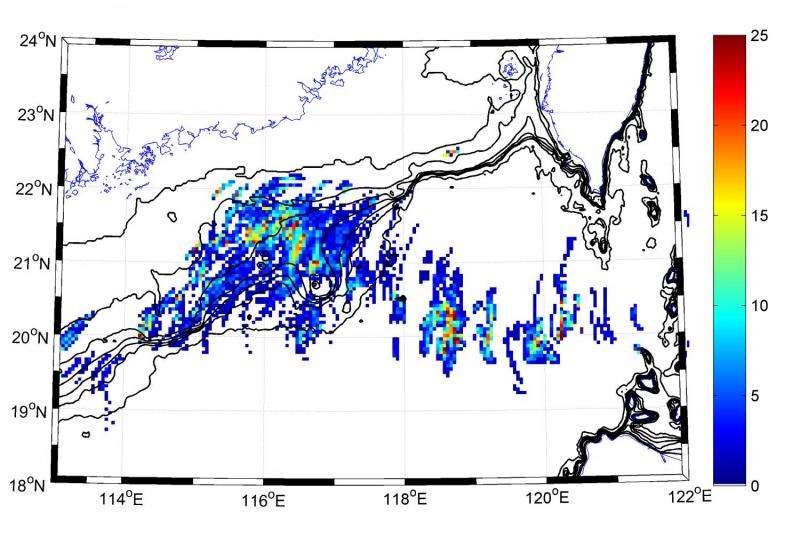Scientists track monster waves below the ocean surface

A scientific research team spent seven years tracking the movements of skyscraper-high waves in the South China Sea. University of Miami (UM) Rosenstiel School of Marine and Atmospheric Science scientists were part of the collaborative international field study trying to understand how these waves, which rarely break the ocean surface, develop, move and dissipate underwater.
These waves, known as internal waves, occur in all the oceans, as well as in lakes and fjords. In the Luzon Strait, between Taiwan and the Philippine island of Luzon, they can reach up to 170 meters (558 feet) tall and travel several hundred kilometers, making them some of the largest waves in the world.
Using satellite imagery collected at UM's Center for Southeastern Tropical Remote Sensing (CSTARS), scientists were able to detect and track them from above. The team discovered that internal waves are generated daily from internal tides, which also occur below the ocean surface, and grow larger as the water is pushed westward through the Luzon Strait into the South China Sea.
"The internal wave produces a current that organizes the ripples on the surface, which are picked up by the radar satellite," said study co-author Hans Graber, a UM Rosenstiel School professor of ocean sciences and director of CSTARS. "This allows us to study how these waves, which largely go unnoticed at the surface, propagate and move."
Tracking internal waves from start to finish helps scientists understand these waves for a number of reasons. They move huge volumes of heat, salt, and nutrient rich-water, which are important to fish, industrial fishing operations and the global climate. In addition, they are important to monitor for safe submarine operations.

Provided by University of Miami





















